I spent this morning fielding quotes from moving companies, since my friends and relatives can't help me with U-Haul. I was pretty stressed, to say the least. A few came back with scary 4 figures, and then I settled on one with 3 figures that still gets good reviews from many New Yorkers including magazines.
I mean, the fact that I have very few things, mostly clothes, and only 1.5 items of furniture ought to more than make up for the mileage, and it has. Moving my bedroom 200+ miles will cost the same as moving a studio across town. It's ok.
On to the next installment! (After this, there will be one more.)
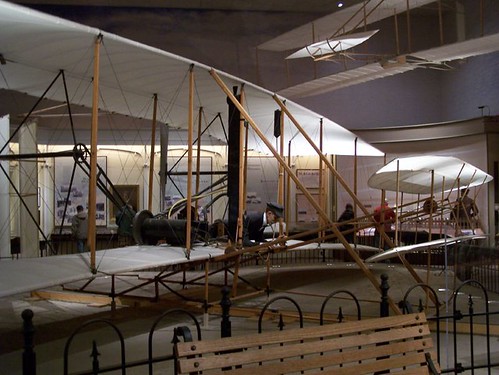
This is the 1903 Wright Flyer. Keep this in mind as you look at all the amazing flying machines that followed in its wake (well I couldn't say "footsteps" (and even "wake" is nautical) (and it never flew high enough to leave a trail) ...
...all the amazing flying machines that followed its 12 seconds of flight.
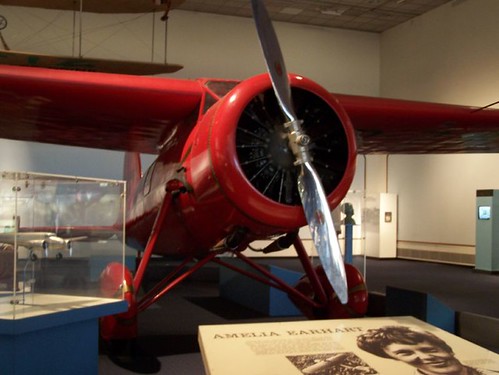
Amelia Earhart's Lockheed Vega, in which she broke two records in 1932:
1) First solo flight by a woman across the United States (Los Angeles, CA to Newark, NJ) and
2) First solo flight by a woman across the Atlantic Ocean (Newfoundland to Ireland)
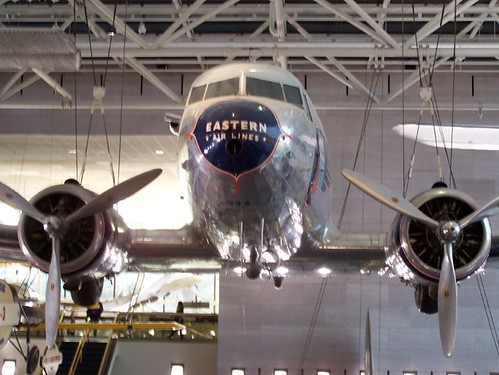
Looks like I took a photo of the DC-3 after all

I cannot remember what cockpit I stepped into here because I was too busy gawking at the thing that was behind it. But it is fairly old, so after seeing the multi function displays of the Boeing 747, here you can see some of the gauges and switches the older generation of pilots had to fiddle with.
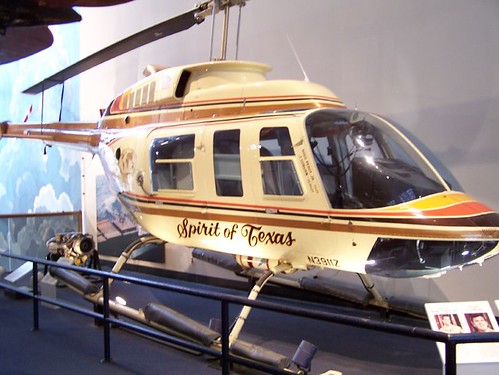
The custom-built Bell LongRanger II Spirit of Texas flown without incident around the world in 1982 - over 26 countries in 29 days - by H Ross Perot, Jr and J. Coburn. (H Ross Perot being the son of Dallas-based EDS founder and former 1992 (?) presidential candidate Ross Perot.)
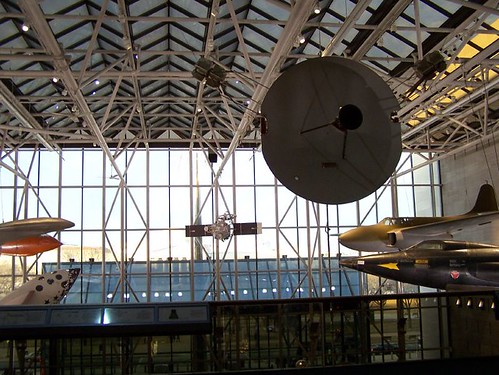
Milestones of Flight

Top: The Bell X-1 in which Air Force Capt. Charles "Chuck" Yeager flew faster than the speed of sound in 1947 (Mach 1.06 / 700mph / 1,127 mph).
Bottom: The SpaceShipOne, which arced above the atmosphere and glided back to earth in a 24-minute flight.
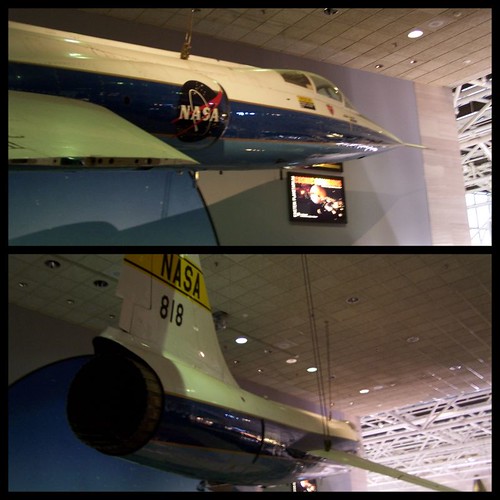
This is the 7th Lockheed F-104 Starfighter ever built. It was used by NASA for about 20 years from the 1950s, as a chase and test plane. The Starfighter was known as the "missile with a man in it" and was the first US jet fighter to fly at Mach 2, twice the speed of sound.

A model of Pioneer 10, which was the first spacecraft to fly by Jupiter in 1973 about a year after its launch, and later became the first man-made object to reach Pluto. Its mission ended in 1997. The last weak signal from Pioneer 10 was received in 2003. Subsequent attempts to contact the craft have been unsuccessful, but it is the first earth object to leave our Solar System. It is heading for the constellation Taurus, and will reach the star Aldebaran in approximately 2 million years (!)
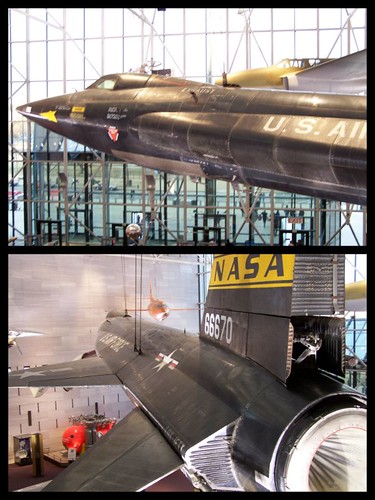
The North American X-15 (don't you love that sweep?) was a rocket powered research jet commissioned in 1959 to take atmospheric flight one step closer to space flight. It reached Mach 4-6 (between 4 and 6 times the speed of sound) and operated at altitudes over 100,000 feet (30,500 m)
We're getting closer to space, the last frontier, and our last installment of the series.
7 comments:
Comparing the X-1 with the F-104, the X-15, and even SpaceShipOne, it's interesting how the fundamental concept of a high-speed, high-altitude aircraft (or should I say "aerospacecraft"?) really hasn't changed all that much since the 1940s.
Then again, neither has the electric guitar.
Museums like this can be visited time and again to look in detail at what I call the secondary exhibits, namely not the aircraft. I find it fascinating to look at these items, such as medals, trophies and uniforms, which tell us all about the people. xx
Minstrel - since the US developed jet planes after WWII using captured German technology, I would technically agree with you, but personally I'll say it hasn't changed much aesthetically since the 1950s.
Of course though, now we have our wedge-shaped fighters so I'd say there was another change in the 1980s/early 1990s (depending on if you count when the Stealth was developed or unveiled to the public).
*********************
Flighty - absolutely, which is why in my first post I felt as though I'd been knocked on the head with knowledge.
I only had a couple of hours to preview the museum and still caught myself studying the little artefacts in the glass cases, like the flying cap and scarf, or comparing the Italian, Japanese, American, and German flight suits, before I had to push on with half an hour before closing.
I don't know how many times I will have to return to the museum before I have seen everything, read most of the plaques (I barely skimmed), seen a few IMAX movies and tried all the simulators!!!
There was one board in the WWII hall you would have liked, it was a pastiche of found objects from that era, from cigarette packs to board games to love notes.
This has been such a fun series, Olivia. I'd been to the museum (ages ago, and in a rush) but I don't recall even half of the things you're showing. Imagine what it'll be in 2010 when the renovations are completed!
So when is the actual move date?
Great pictures!
Growing up in Albuqerque, NM in the late 1950s and early '60s, I remember the X-15. I don't think I ever saw one, but every boy had a plastic model X-15. The F-104 had the problem of falling out of the sky, though a check with wikipedia shows that the F-100 was even more dangerous.
When I lived in Iowa City in the later 1960s, my house was undrneath the flight path of the airport. Ozark Air Lines still had DC-3 service, and the planes, which must have been 40+ years old, still looked good.
Nikki - So glad you're still enjoying the tour!
You wait till I get to the other museums on the Mall. Sooooo many of 'em.
About the renovations, they're only taking place in the hall where Earhart's Vega and the Spirit of Texas chopper (among other things) were displayed.
My move date is a nice one, Valentine's Day :)
Makes it kind of significant.
*********************
Steve - thank you so much for sharing your recollections of these great machines.
I've only seen a propeller plane fly over once and it was quite an exciting experience. (Same goes for jets, though I've seen many more of them!) I know we complain about any air traffic but, living under propeller flight path must have been infuriating.
What collector's items those Space Age aircraft models must be now.
the cockpit photo you show is the 747 and the other one you may have walked through is the DC-7.
Post a Comment